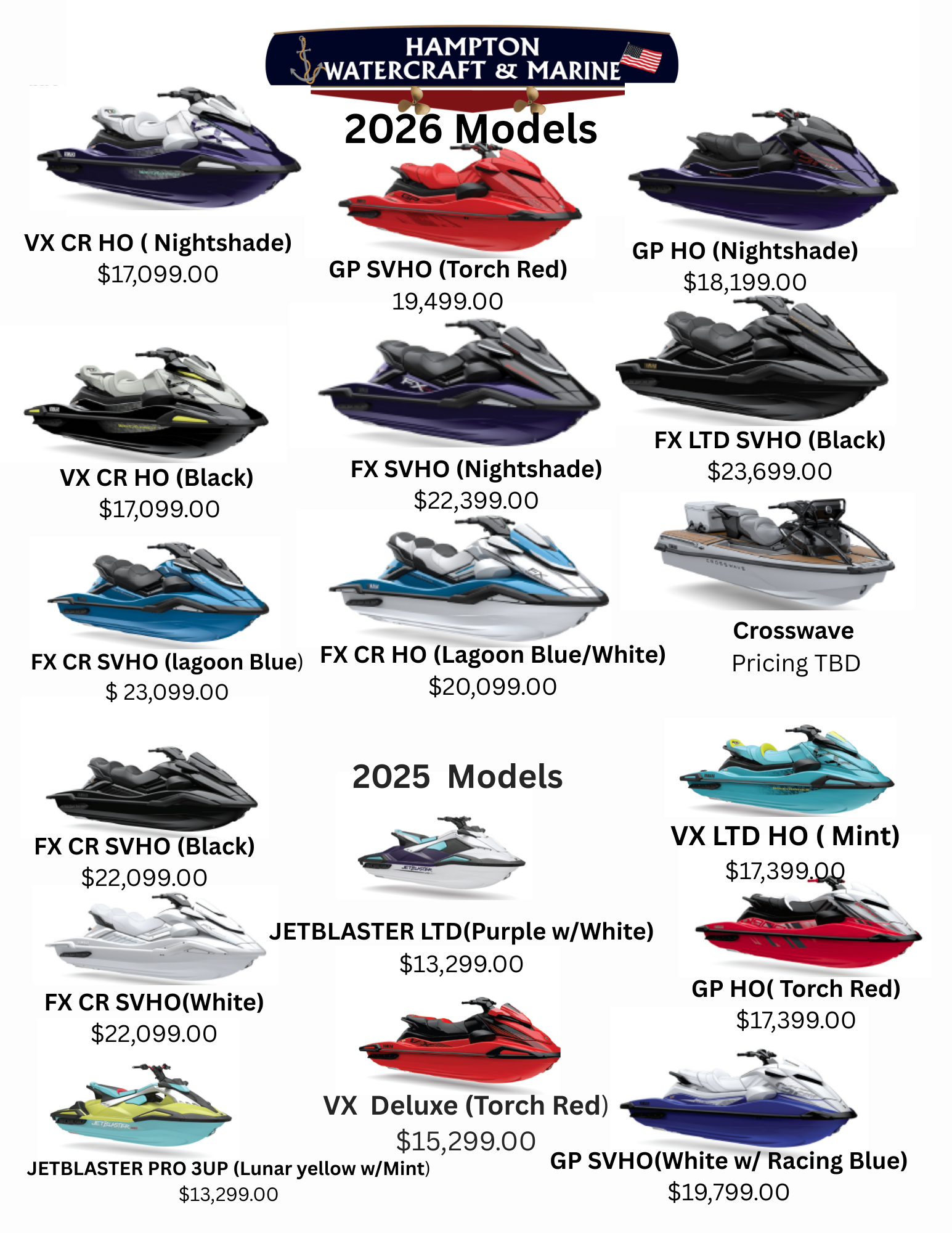Boat Winterization
 Winterization is the process by which a boat is prepared for winter storage. Done properly, it ensures that the vessel doesn’t get damaged by the effects of cold weather and sits idle for a long period of time. If you’re not sure where to start in regards to winterizing your boat, this guide from Hampton Watercraft & Marine can help.
Winterization is the process by which a boat is prepared for winter storage. Done properly, it ensures that the vessel doesn’t get damaged by the effects of cold weather and sits idle for a long period of time. If you’re not sure where to start in regards to winterizing your boat, this guide from Hampton Watercraft & Marine can help.
Clean and Inspect
Start by assessing your boat’s current condition. Any problems you notice now will likely be worse by the time spring comes along, so address them now. Remove non-essential items like personal possessions, clothing, fishing gear, etc. Clean both the interior and the exterior of your boat before moving on to winterizing your engine.
Engine Maintenance
Liquids like motor oil, fuel, and coolant expand when they freeze, which can wreak havoc on your engine. That's why you’ll want to remove as much water from your engine as possible before you store your boat. Start by running fogging oil through your engine. Next, fill your engine block with antifreeze. We recommend using something non-toxic like a propylene glycol solution. Third, drain your fuel tank and then replace it with fresh, ethanol-free fuel. Be sure to add a fuel stabilizer to help prevent condensation. Finally, replace your engine oil. Each of the different boat engine types tends to have its own particular winterization needs, so we recommend consulting your owner’s manual for additional guidance.
Livewell Winterization
Some fishing boats have built-in livewells to store live bait or catches. You’ll need to drain your livewell and pump antifreeze through the system to prevent it from freezing over.
Protect Your Boat
Some boat owners choose to shrink-wrap their boat to give it some additional protection against winter conditions. Shrink-wrapping has both pros and cons. On the one hand, it provides a tight waterproof seal, and you can change up how your boat is wrapped to better suit your needs. On the other hand, you need to pay to get your boat re-wrapped every year. Shrink-wrapping also tends to seal moisture in as much as it keeps moisture out, and it can make accessing your boat more difficult.
Shrink-wrapping isn’t the only method of protecting your boat from weather damage and pests. A boat cover can be used to shield your vessel whether it’s stored indoors or outside. When shopping for boat covers, look for one that’ll fit snugly and is made from sturdy, waterproof materials. Whichever method you use, make sure that your boat is completely dry before you cover it up.
For more on winterization or to shop our inventory of new and pre-owned boats, visit Hampton Watercraft & Marine. We operate dealerships in both Hampton Bays and Eastport, New York. We also offer marina facilities, a pro shop, a ship store, and custom hull graphics. We are proud to serve the Eastern Long Island, New York area, and we hope to see you soon!

